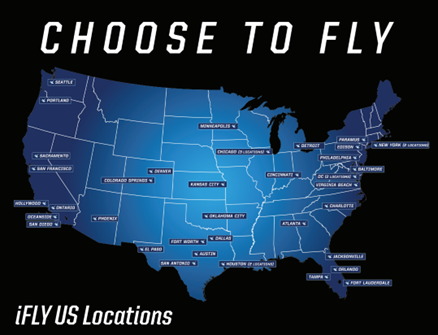A GOD WHO IS WITH YOU IN YOUR HUNGER
One thing Jesus did in the Eucharist was to connect, in a vivid and simple way, eating with obedience and worship. He joined earth with heaven, bread with manna, flesh with Spirit. He linked physical hunger with spiritual hunger. He reminded us that every bite is also a prayer. ~ Mark Buchanan, The Rest of God
The world is perishing for lack of the knowledge of God and the Church is famishing for want of His Presence. ~ A. W. Tozer, The Pursuit of God
My soul shall be satisfied as with marrow and fatness; and my mouth shall praise thee with joyful lips: when I remember thee upon my bed, and meditate on thee in the night watches. — PSALM 63:5–6 KJV
One of the most difficult aspects of living an integrated, connected life in the absence of a normal tongue is the ritual of eating three times a day. What was once a source of nourishment and enjoyment has become a frustrating and often painful chore.
It’s not just the mechanics of it, although that part is quite complicated. Two-thirds of my tongue is built from tissue and vessels taken from my neck and left forearm. The surgeons shaped that tissue like a flap around the remaining portion of my tongue, then tethered it to the base of my mouth. This means it doesn’t move and groove like yours does. Imagine trying to eat with a gym sock in your mouth. Puts a damper on things.
But more than the difficult mechanics, I’ve lost much of the enjoyment of eating. The majority of my tongue lacks tastebuds. And the few that remain were burned by radiation. In addition, surgery severed a nerve. Add all that up, and according to the doctor’s best estimate, I probably have somewhere between 20 and 30 percent of my ability to taste left.
I don’t recommend it.
We don’t appreciate our physiology’s fine-tuning until something happens to shake it up. We overlook so much of the miracle of daily life until we lose it.
For the most part, I do okay when I’m alone. I don’t have to worry about manners, and I don’t have to navigate the conversation that accompanies a meal shared with others.
But more often than not, eating happens in community. And I can’t eat and talk at the same time.
During a typical meal, you take a bite of food, chew it, swallow it, and then make small talk, possibly grab a quick sip of water. Maybe you ask your wife about her day or check in with your children about school. If you’re supping with colleagues from work or friends from church, you may discuss an important project or ask them about a recent holiday or family adventure.
Sharing a meal is much like the Colorado Symphony performing Tchaikovsky. With a single composer and music selection guiding them, the various instruments alternately play solos as well as accompaniment. When the clarinets are done, the strings take over, then the percussion or brass. Music is a give-and-take of the various players and parts, and the result of the corporate participation is a harmonious experience that hints of the divine.
The problem for me is that I can no longer play my instrument with precision. I can no longer keep the same rhythm and timing as everyone else sitting at the table. For me, eating takes an extraordinary amount of time and focus. If I move too quickly, I choke or injure myself. I need to swallow multiple times for every bite of food to go down. That means if someone asks me a question, it might be several minutes before my mouth is available to answer it. Most people tire of waiting. And when a dinner conversation turns to a topic that interests me, I can’t chew and swallow fast enough to join in. By the time I’m able to speak, the rest of the symphony has moved on to a different piece of music.
At each meal, I’m required to choose. Connect and converse? Or chew and swallow? I can satisfy either my hunger for food or my hunger for human connection. But I cannot do both.
I’ve learned to navigate this with family and close friends. They don’t mind when wayward lettuce flies across the room while I’m answering a question, and they pretend they don’t notice when I launch ground beef while laughing at a story. I may eat like a toddler, but they love me enough to overlook it.
For me, it remains humiliating. And isolating. To expose my vulnerability in these moments feels like opening the old underwear drawer for a group of strangers. It’s raw, vulnerable, embarrassing. How do I lay the worst part of myself out on the table in the presence of others? At times, the gamble is too great.
You may not realize it, but a dinner table isn’t really about the food. It’s about the people. And the relationships that are built three times a day at its altar.
Sharing a table is a sharing of our humanity and our common need for nourishment, day after day, to survive. But that requires trust. And safety. Only then, as we fork roast and potatoes into our mouths, regardless of how long it takes us to chew and to swallow, we might find a way to solve the deeper hunger that plagues each one of us.
In 1495, the heart of the Renaissance, Leonardo da Vinci began a work that became one of the most significant artistic productions in all of history: The Last Supper.
Displayed on the dining room wall of the Santa Maria delle Grazie monastery in Milan, Italy, The Last Supper is da Vinci’s interpretation of the gospel account of Jesus’ last supper with His disciples. In his painting, he captures the moment Jesus tells His closest friends that one of them will betray Him. The table is covered with all the evidence of a shared meal and familiar companionship. But their faces reflect nothing but shock and disbelief at Jesus’ announcement.
A betrayal? And by one of the inner circle?! Inconceivable.
Most Renaissance masters painted their frescos on wet plaster, mixing their paint with the wet material. Leonardo da Vinci, however, had no experience with this type of mural art. He painted directly onto the dry plaster wall, and within decades the paint started to flake and peel.
In the hundreds of years since, numerous meticulous restorations have been performed to recapture the colors as closely as possible to da Vinci’s original and to provide us with the mural we can buy tickets to see close-up. But the truth is that very little of da Vinci’s work — if any — is left. It’s been lost to time, covered by generations of well-meaning artists and admirers.1 Even so, it remains beautiful and worth contemplation.
The biblical Last Supper is one of the few New Testament stories that appears in all four gospels — Matthew, Mark, Luke, and John. This speaks to its significance and the impact it had on those who shared it.
Today I sat down and read all four accounts, comparing the varying details and nuances of each. At the same time, I gazed at an online image of da Vinci’s rendition of the Last Supper, allowing the art to trigger my imagination.
Meals matter to me. Especially final meals that happen right before a life-altering event. I still remember my “last supper,” the night before the surgery to remove my tongue. Tri-tip steak, seasoned and cooked tender until it fell apart, homemade hand-cut egg noodles (my mama’s recipe), mashed potatoes with extra butter, and sweet corn. Delish.
Final meals are rich with significance, full of the flavor of what is and what is yet to come. But to understand this particular meal and its implications, we need to understand the historical context.
Although table sharing has a modicum of significance in our modern context, it played a central role in ancient cultures. Hundreds and thousands of years ago, people had extremely limited social entertainment. So sharing a meal around a table played a much more important role in community life.
For the people of Israel, in particular, meals involved the observance of clear boundaries, differentiating God’s people from the rest of the world. According to Old Testament law, Israelites were to remain separate, dining only with fellow Jews. Moreover, to share a meal with someone was to accept them as part of your family. In a sense, you were telling your guest that you trusted them enough to join your families in marriage.2
The meal wasn’t about food. It was about intimacy. And an invitation to a committed familial relationship.
This is why the Pharisees of Jesus’ day exploded in anger when Jesus ate dinner with politicians, prostitutes, the sick and mentally ill. “I must stay at your house today,” Jesus told the thief Zacchaeus, an announcement that spit in the faces of the rule-following religious leaders (Luke 19:5). God had set the boundaries; why wasn’t Jesus respecting them? He was crossing lines that weren’t meant to be crossed.
What they failed to grasp? Jesus was God. He was the ladder stretching from heaven to earth, connecting the holy with the human. By eating with sinners, Jesus put His love of people over piety. But those who worry about good manners don’t understand this. Which is why the religious resisted with such vehemence.
Back in the 1950s and ’60s, a researcher by the name of Harry Harlow did a number of studies on attachment by observing rhesus monkeys. These studies took place before the advent of animal protection guidelines, and I should warn you his methods would not fly today. But Harlow’s results were stunning and significant. And I couldn’t pull myself away from the grainy black-and-white videos documenting his research.
To begin, Harlow separated baby monkeys from their mothers a few hours after birth. Then he made two surrogate “mothers,” the first out of hard, cold wire with a milk bottle mounted on the top, and the second covered in soft terry cloth but without the bottle. Then the baby monkeys were given a choice of mothers and Harlow recorded their responses. Although the monkeys went to the wire mother for food, they spent the majority of their time cuddled with the terrycloth mother, even though she offered no physical sustenance.
Harlow theorized that attachment was not about food and water, hunger and thirst. It was about relationship. Over and over, the monkeys preferred a soft, nurturing “mother” over food, even when they were hungry. Because they ached for more than milk; they ached for love, safety, touch, and connection.3
The Church — and the people who make up the Church — don’t always do a good job of providing a soft place for hungry people. Instead, we draw lines and serve our food to those we deem deserve it. We’re far more concerned with hard-wire boundaries than terry-cloth comfort.
While it is true we need rules, boundaries, and responsibilities to guide families and society, we need more than functional, cold-wire apparatuses to deliver what we crave. We need food in the context of relationship.
Which is what went down at the Last Supper table.
The table Jesus shared with His closest friends included common laborers, tax collectors, uneducated fishermen, a guy with an anger problem, and another with a doubt problem. Several at His table boasted egos bigger than their pay grade, and one was secretly selling his proximity to Jesus for a kickback he would later regret.
These were not the rule-following, line-drawing pious. These were ordinary, everyday broken people who were likely to launch ground beef onto the shoulder of their tablemate while saying something decidedly unreligious.
Even so. Jesus offered each a seat at His table. Bread spread out before them, His body close enough to squeeze a shoulder, slap a back, or touch a hand. He invited them to dinner, said, “Do life with Me. You are family. I love you.” And in the process, He fed more than their bellies.
It wasn’t about the food. It was about relationship.
While they were eating, Jesus took bread, and when He had given thanks, He broke it and gave it to His disciples, saying, ‘Take it; this is My body’. — Mark 14:22
One by one, they took the bread, tore some off, chewed, swallowed, and passed it on.
Then he took a cup, and when he had given thanks, he gave it to them, and they all drank from it. — Mark 14:23
They all drank from it, egomaniacs and doubters and deniers alike.
This is My blood of the covenant. — Mark 14:24
The covenant. The covenant cut with Abraham. The covenant promising God would bless not only one man but every last one of us. The animals, cut in bloody pieces, separated to form a path that God alone would walk through. If the relationship was broken, the attachment breached, He would be the one torn in two to make everything — everyone —whole.
This is My blood of the covenant, which is poured out for many.
— Mark 14:24
He came and sat at our table so the many would never again fear losing their seats at His.
It wasn’t about consuming but about pouring. It was never about the meal. It was always about the relationship. An invitation to a covenantal, table-sharing intimacy. And the price He was willing to pay to secure it.
Poured out for many. The great and the small, the whole and the broken, the strong and the weak, the sick and the well. No longer would there be any boundaries, any separation, any breach, any divide.
Only one table. One cup. One meal. And terry-cloth grace.
1.“The Last Supper—by Leonardo Da Vinci,” Leonardo Da Vinci website. See also “The Last Supper and Santa Maria delle Grazie,” LeonardoAMilano.com website
2.D. Brack, “Table Fellowship,” in The Lexham Bible Dictionary, ed. J. D. Barry et al. (Bellingham, WA: Lexham Press, 2016).
3.“Harry F. Harlow, Monkey Love Experiments,” Adoption History Project, University of Oregon
Excerpted with permission from Relentless by Michele Cushatt, copyright Michele Cushatt.
* * *
Your Turn
The meal is always about the relationship. Jesus came for relationship. For comfort. For love. To pour Himself out for us. Come join the conversation on our blog about The Meal! ~Devotionals Daily
|

















































No comments:
Post a Comment